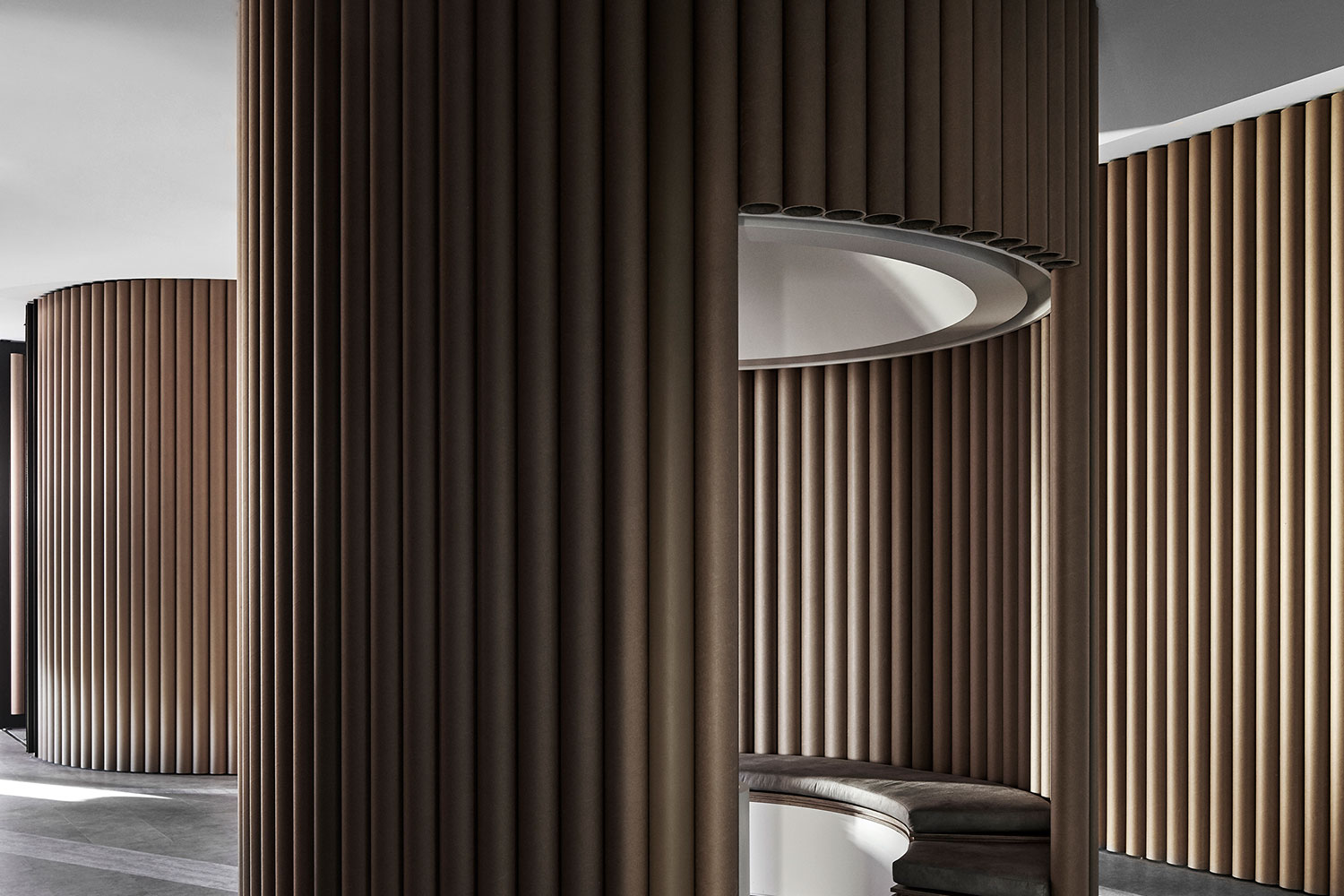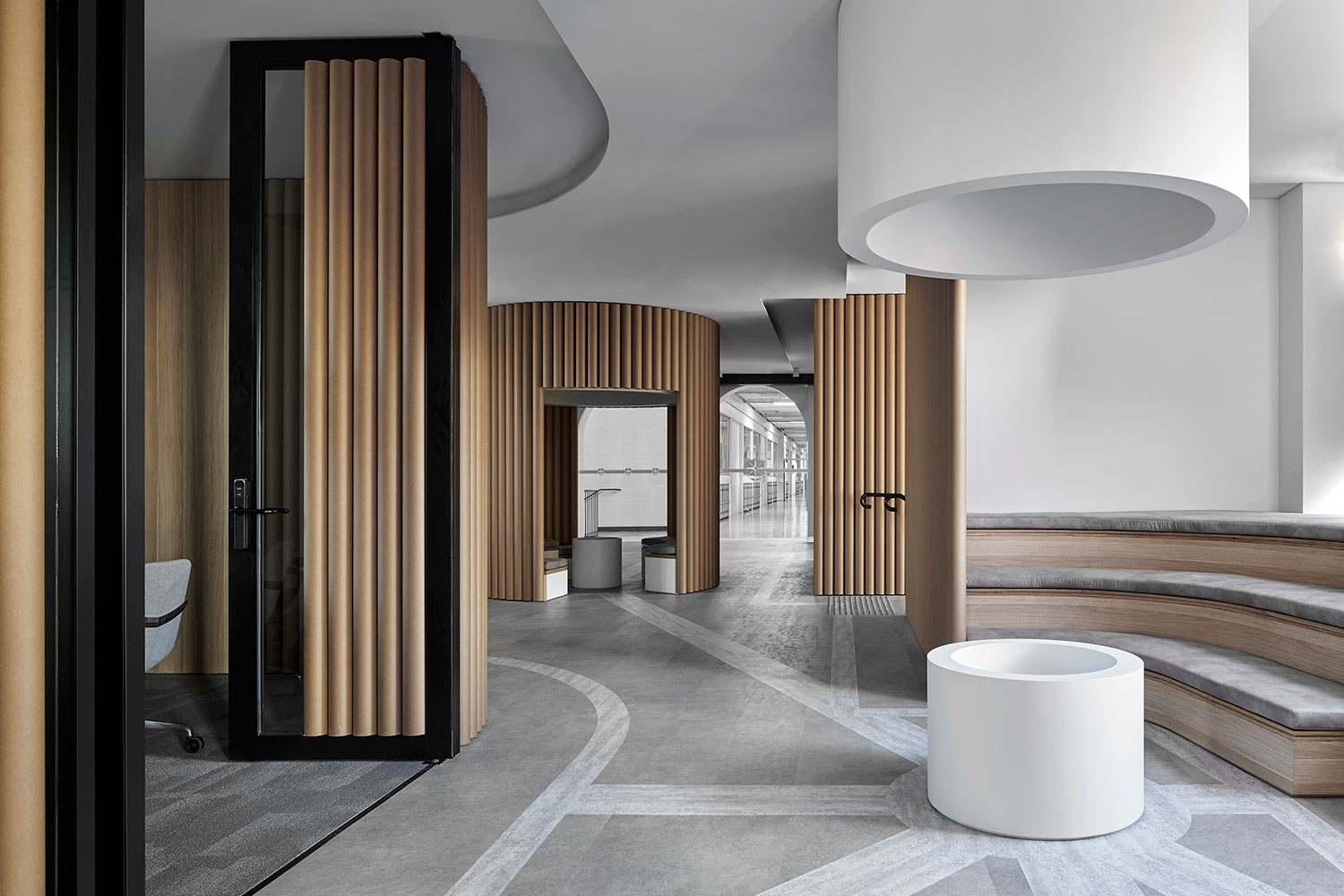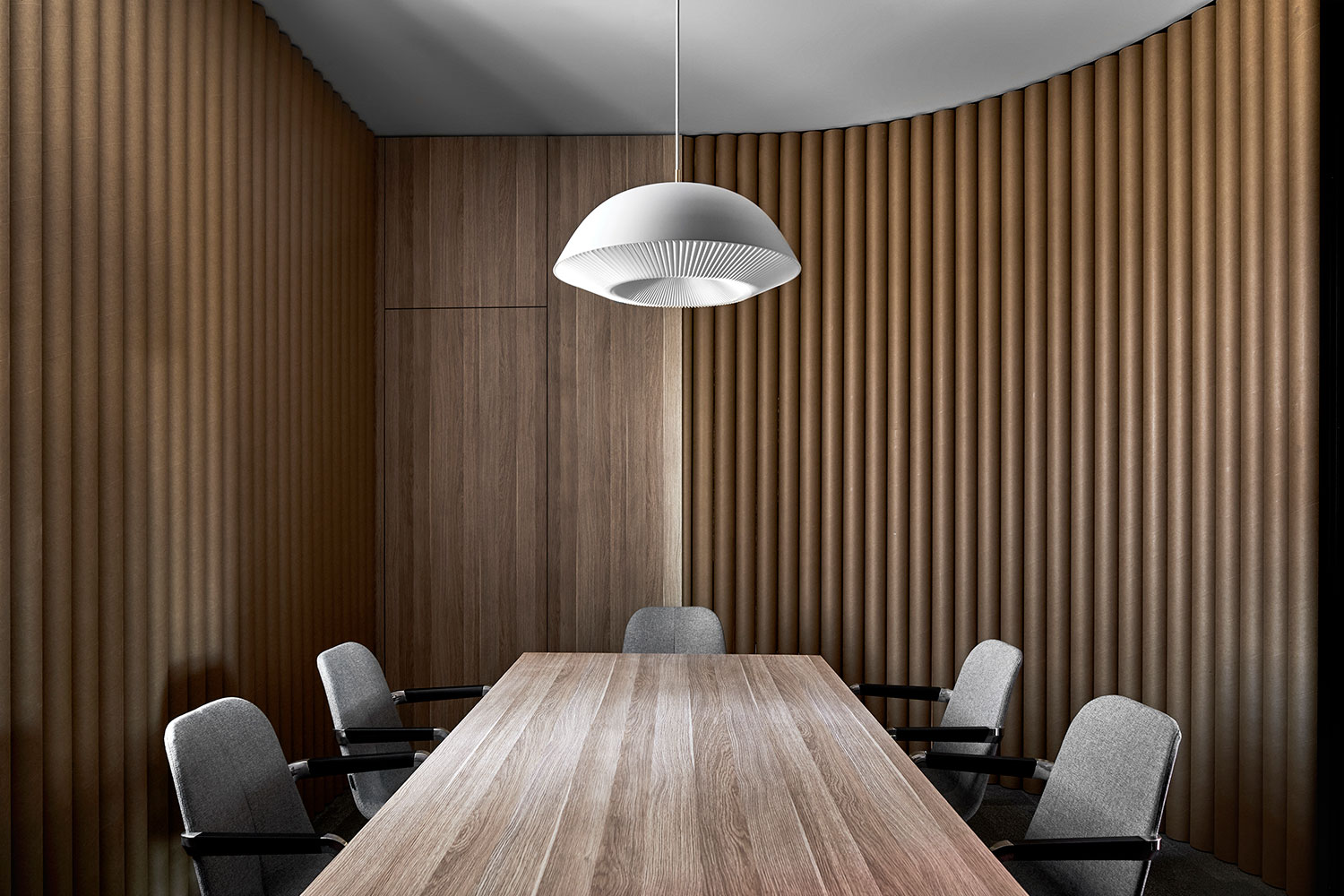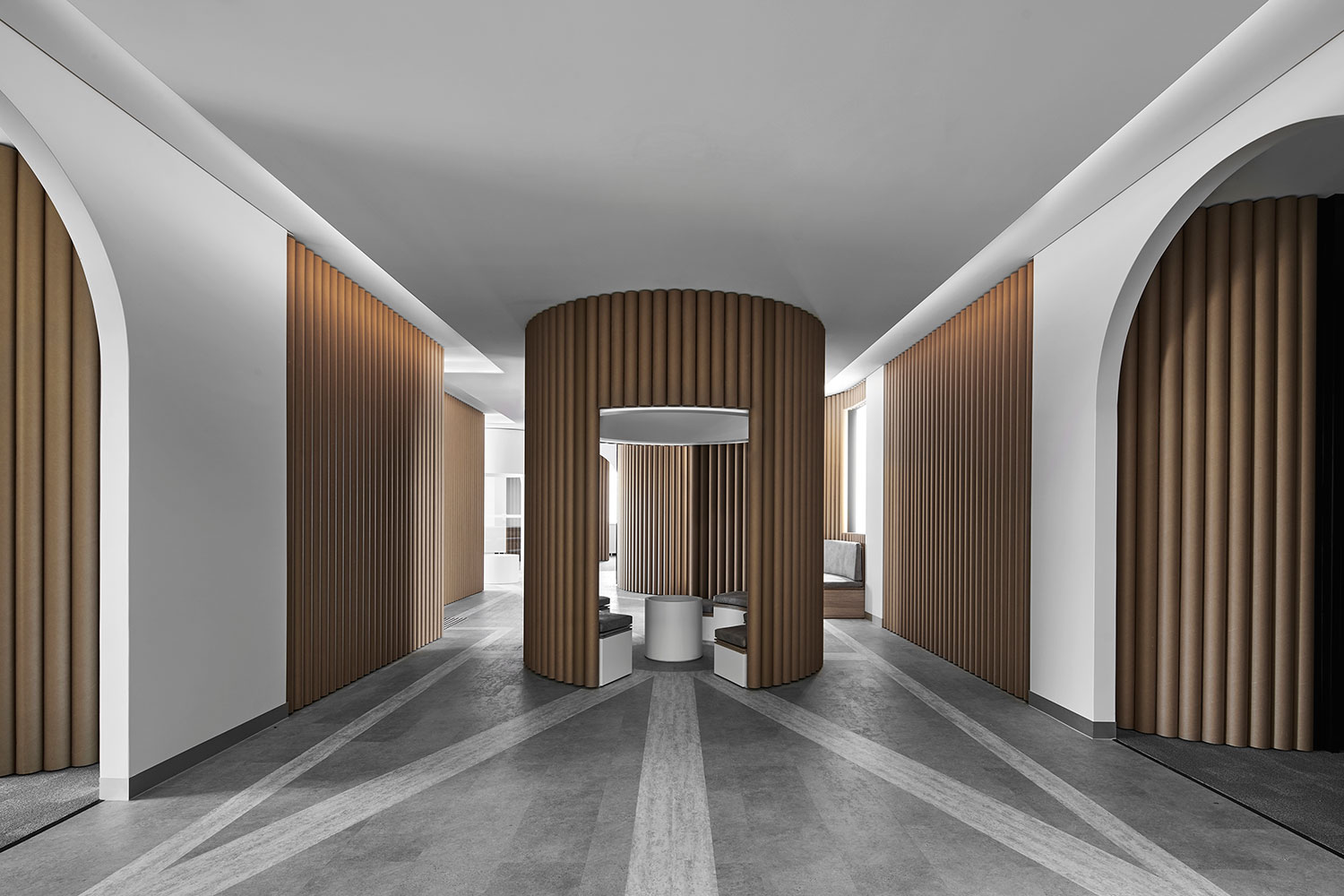Piazza Dell’Ufficio
Branch Studio Architects
Australia
The Piazza Dell’Ufficio is a re-imagining of the former executive administration offices at Caroline Chisholm College. The spaces are to be primarily used by school hierarchy staff, the accounts department and student welfare, and cater for staff and student meetings of various sizes.
Formerly the space was a dark rabbit warren of small disproportional office spaces and a meeting room with very little natural light. Highly inefficient and inflexible, the block provided little to no humanistic interaction for its users. Branch Studio Architects’ pedagogical objective was to create a space that reduced visual barriers – where day-to-day administration practices could occur but also where students could feel comfortable meeting up with a staff member for a chat.
The architects derived the idea of rationalising the space as a central public piazza linked by two primary monuments: a clock tower and a public forum. The central public piazza is a destination/primary meeting point for student and staff interaction. It also acts as a forum where the school principal and other hierarchy staff can address staff in numbers. The working office spaces become the ancillary ‘buildings’ off the primary piazza. The formal composition of the space creates a diversity of working spaces. These cater for individual offices, shared office spaces, various meeting areas and hot-desk working environments.
Purposeful visual cohesion is created throughout using a very cost-effective partition methodology of cardboard tubes ($2.50 each) to sculpt the interior spaces. The tubes both individually and in mass are used to create a continuous visual curve and warmth that softens the interior spaces throughout. Light is also an important element of the project. The control of light creates an extension of the internal formal curvature – a visual and contextual narrative referencing the subdued light cast underneath the porticos and formal archways used in eighteenth-century classical and neoclassical architecture.
Photography: Peter Clarke.




